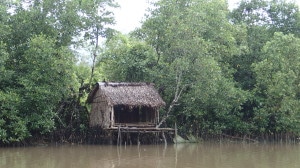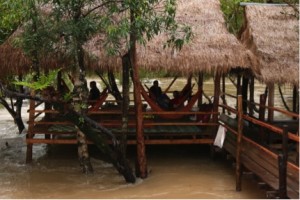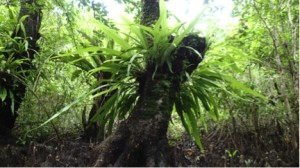I’m back in Cambodia this summer again revisiting the old growth mangrove forest in Cambodia to help continue the delineation and characterization of this newly protected area with our colleagues from the Prey Nup Mangrove Conservation Project. Last summer’s investigation introduced my team to enterprising conservationists who have been purchasing and protecting pristine mangrove forests. They are also acquiring adjacent land that has been severely degraded by tree cutting and diking for rice fields and shrimp farms, with the goal of restoration. The enthusiasm and commitment of Jos Stiers and Dr. Rob Overtoom inspired me to get my students involved so they could experience these mangrove ecosystems, but also learn how to restore functioning of impacted lands back to a more natural state while working with local villagers. Jos and Rob introduced me to Dr. Nick Souter from the Biodiversity Conservation program at the Royal University of Phnom Penh (RUPP) who runs the Biodiversity Conservation masters program. Dr. Souter asked me if I could teach a field botany course that would incorporate rainforests as well as mangroves.
On this field trip we began developing a field botany course for USF and RUPP students studying environmental science and management. The goal of the course is to train students in field botany skills, teach characteristics of dominant tropical plant families, and demonstrate how environmental managers use these skills in tropical ecosystem conservation and restoration. This two-week field course will explore ecosystems from roots to reefs – beginning in Cambodia’s rainforests of the Elephant Mountains, moving to the mangrove forests along the coast, and ending at coral reefs along islands off of Sihanoukville. Through hands on activities, students will learn identification of dominant plants of each ecosystem, about their unique adaptations to the climate and local conditions, identify critical ecosystem services and impacts, and management and restoration strategies. Our masters students in the Environmental Management program (MSEM) at USF will work closely with Cambodian (Khmer) Masters students from the Biodiversity Conservation program at the Royal University of Phnom Penh. Together, we will work to better understand how the local culture and people influence management of forest and coastal resources.
In the field last week, we visited a rainforest in the Elephant Mountains with Dr. Nick Souter to investigate co-teaching this field class. We drove along a narrow red mud road, sliding around the potholes, to an opening next to rapids on the Thmor Rung River. The warm monsoon rain dumped in buckets and we took refuge under thatched roof platforms at the river’s edge. The rushing water rose above the banks and swirled beneath the plank deck where we reposed in hammocks and enjoyed a local picnic of rice, morning glory greens and the village chicken until the rain stopped. Nick has taken students here teaching field skills including orienteering and basic plant identification, particularly the diverse and commercially valuable rattan. Rattan is a thorny palm tree that is commonly used for furniture.
This area, adjacent to the Shinta Mani Wild is being developed as an eco reserve. One day an eco-lodge will be located along the open area next to the river and there are plans for a field station available to researchers by the owners. Currently there is only a grader scraped swath heading along the river to sites where the lodge will be built among the trees. We explored along the river once the rain stopped. Rich riparian habitat borders the mountains cut by the river. Beautiful trees, butterflies and birds flitted unseen through the undergrowth. The entire region has been logged in the late 1990s so most of the forest is secondary growth. An extensive study of the plants and trees in the region has been conducted by Dr. James Maxwell, Director of the Chang Mai Herbarium, as part of an assessment for the location of the eco resort. Some canopy species are reaching over 20 meters and the hills are thick with saplings, seedlings, vines, shrubs and small trees. Beautiful epiphytes and an encrusting begonia growing on the trees and rocks. With the support of a small local village this would make an ideal field teaching location. Heavy rains we encountered during our field visit made me rethink the scheduling of the course to the dry season and after the field station has been constructed.



